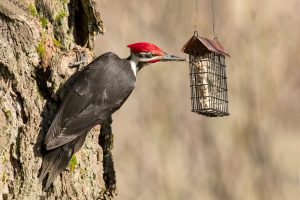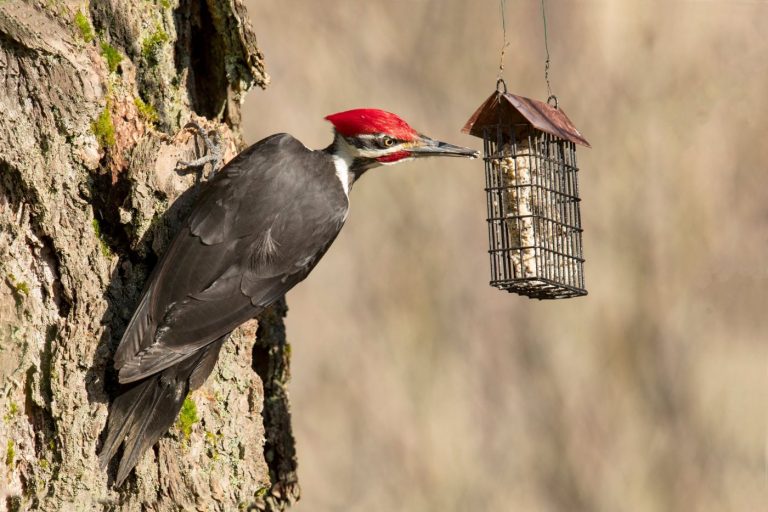Pro tip: If you are going to see San Diego Zoo’s newest giant pandas, look up — way up.
That’s where you’ll see a terraced hillside that’s perfect for pandas to climb and explore. Xin Bao regularly lumbers up the steep hill.
“She is a very curious bear. She’s done a lot of exploring on the hillside,” noted Megan Owen, vice president of wildlife conservation science for San Diego Zoo Wildlife Alliance.
After flying in from China and spending six weeks out of view, giant pandas Xin Bao and Yun Chuan will make their public debut at noon Thursday.
This is the first time since 2019 the zoo has cared for pandas, and interest is high. Tickets for morning walking tours to see the bears quickly sold out for most of August, and the mayor is warning panda watchers to be wary of traffic jams heading into Balboa Park.
The bears are in a new habitat called Panda Ridge that’s four times bigger than the zoo’s previous panda space. It features pools and misters to keep the bears cool and boasts rock outcroppings, lush trees and bushes inspired by Chinese forests where wild pandas roam.
Zoo officials say they’re excited about giving visitors a chance to see pandas for the first time since they bade farewell to 6-year-old panda Xiao Liwu and his mother Bai Yun, who had lived at the zoo for 23 years.
Xin Bao relaxes on the large wooden platform deck In her new habitat at the San Diego Zoo on Friday. (Nelvin C. Cepeda / The San Diego Union-Tribune)
The latest panda pair came to San Diego this summer under a 10-year research agreement with China, with the zoo paying $1 million a year in exchange for the animals. Yun Chuan and Xin Bao, who arrived at the end of June, were the first giant pandas to enter the U.S. in 21 years.
“The enthusiasm of our guests, and of San Diego for giant pandas being here again, it is just really quite heartwarming,” Owen said Friday while giving a tour of the habitat. “Everyone is on board with this, and they are so excited about it, so I can’t wait for people to see the giant pandas.”
Yun Chuan just turned 5 and Xin Bao is 4 — they both have July birthdays. Pandas are solitary animals in the wild and are housed separately in zoos, except during the breeding season when there is a short window of ovulation. Zoo officials hope the pandas eventually will produce cubs. The first chance to try will likely be next spring or the following year, Owen said.
For now, Yun Chuan is housed in the smaller of the two habitat spaces, the one on the east side without the hill. Zoo officials say it is likely they’ll rotate the two bears between the habitats later.
“Eventually males have a bigger territory naturally so that will become Yun Chuan’s space” with the hillside, said curator of mammals Nicki Boyd. She said his running up and down the hill will “build up his muscles for breeding.” The hill in Panda Ridge formerly was part of a habitat for takins, mammals native to China that are related to sheep and wild goats that also enjoy climbing.
Each habitat area includes an air-conditioned bedroom off public view that the bears can access whenever they want. At night, the bears are moved into bedrooms in a building next door, built in 2003, that serves as the zoo’s research hub for giant pandas.
Several ways to see the pandas
Yun Chuan enjoys eating a fresh batch of bamboo placed in his enclosure. (Nelvin C. Cepeda / The San Diego Union-Tribune)
Zoo officials say visitors have several ways they can see the pandas: They can obtain a complimentary timed ticket, join a standby line in person, or reserve an exclusive, 60-minute early morning walking tour.
The free timed tickets are set for every 15 minutes between 9:30 a.m. and 3 p.m. and can be obtained day-of at the ticket booth when admission tickets are purchased, or at various locations in the main plaza. The zoo notes on its website that standby does not guarantee “giant panda habitat access” and that the tickets are first come, first served. The zoo said “thousands” of timed tickets would be issued each day.
The walking tours are a new option for panda watchers. While zoo gates typically open at 9 a.m., the tours begin at 8:15 and 8:30. Tickets are $92 to $115 per person, depending on the day, and can be booked online or by calling (619) 718-3000.
For those unable to visit in person, there eventually will be a Panda Cam up and running at some point, providing an online window to watch the bears and their antics. It is unclear if the zoo will stream footage live or show recorded material. Owen said details are still being worked out.
‘Happy bear’ behaviors
Boyd, the curator of mammals, said the two pandas easily settled into their new home after arriving in San Diego on June 27. “They’ve exceeded all my expectations with acclimation,” she said.
The pandas are closely monitored, with zoo employees noting how much they’re eating and how they’re spending their time. Those observations are important, Owen said.
“When they are doing well they are active and exploring, they are resting comfortably in the afternoons, they are eating well and just exhibiting behaviors that reflect a happy bear,” she said.
Each bear has a distinct personality. Yun Chuan is laid back, easygoing and loves his bamboo.
He ate during the entire flight to San Diego, Owen said, “which is a sign of comfort, that’s a really good sign. So he transitions well.”
Xin Bao, who is the smaller of the two, is smart and curious and likes to check out everything around her. “She is just very engaged in her environment,” Owen said. “She wants to know. She’s always looking around.”
On Friday, Xin Bao could be seen scrambling up the hill, taking a dip in her pool and sitting and sorting through a pile of bamboo, picking out stalks she wanted to eat and gathering up handfuls of leaves to munch on.
Pandas eat up to 40 pounds of locally grown bamboo a day and are fed three times daily, with more bamboo left out in their off-exhibit bedroom areas at night, in case they want a midnight snack.
Long history with pandas
Xin Bao explores the surrounding in her new habitat. (Nelvin C. Cepeda / The San Diego Union-Tribune)
The zoo has a long history of caring for pandas. Pandas first came to the San Diego Zoo in 1987 under an exhibition loan and returned in 1996 under a conservation agreement focused on improving panda reproduction. That program resulted in six cubs being born and scientists helped develop techniques credited with keeping nursery-reared cubs alive, including creating panda-milk formula. The zoo also orchestrated the first successful artificial insemination of a giant panda outside of China.
The zoo had to secure an import permit from the U.S. Fish and Wildlife Service before bringing the pandas into the country. In its application, the zoo broadly outlined conservation research it plans to undertake over the next decade, seeking to help captive pandas as well as those in the wild.
Pandas were long considered endangered in the wild, but gains in panda health and forest protection prompted their status to be upgraded to vulnerable by the International Union for Conservation of Nature in 2016.
Zoo officials say giant pandas embody the important conservation mission — and they hope those who see the bears will embrace the need to protect animals and their natural habitats. The only pandas in the U.S. right now are at Zoo Atlanta, but Chinese officials have signed agreements to send panda pairs to the National Zoo in Washington, D.C., and the San Francisco Zoo, which has never had pandas.
Zoo officials didn’t respond to questions about how much the pandas might boost their August attendance. When a panda pair came to San Diego for a 200-day stay in 1987, they drew upwards of 2 million visitors, according to the zoo.
Mayor Todd Gloria this week urged residents to visit and welcome the pandas, but to consider taking public transit or using ride-share services. Motorists should expect heavy traffic on Park Boulevard and around Balboa Park on Thursday and Friday and for the next several weekends, city officials said.













+ There are no comments
Add yours